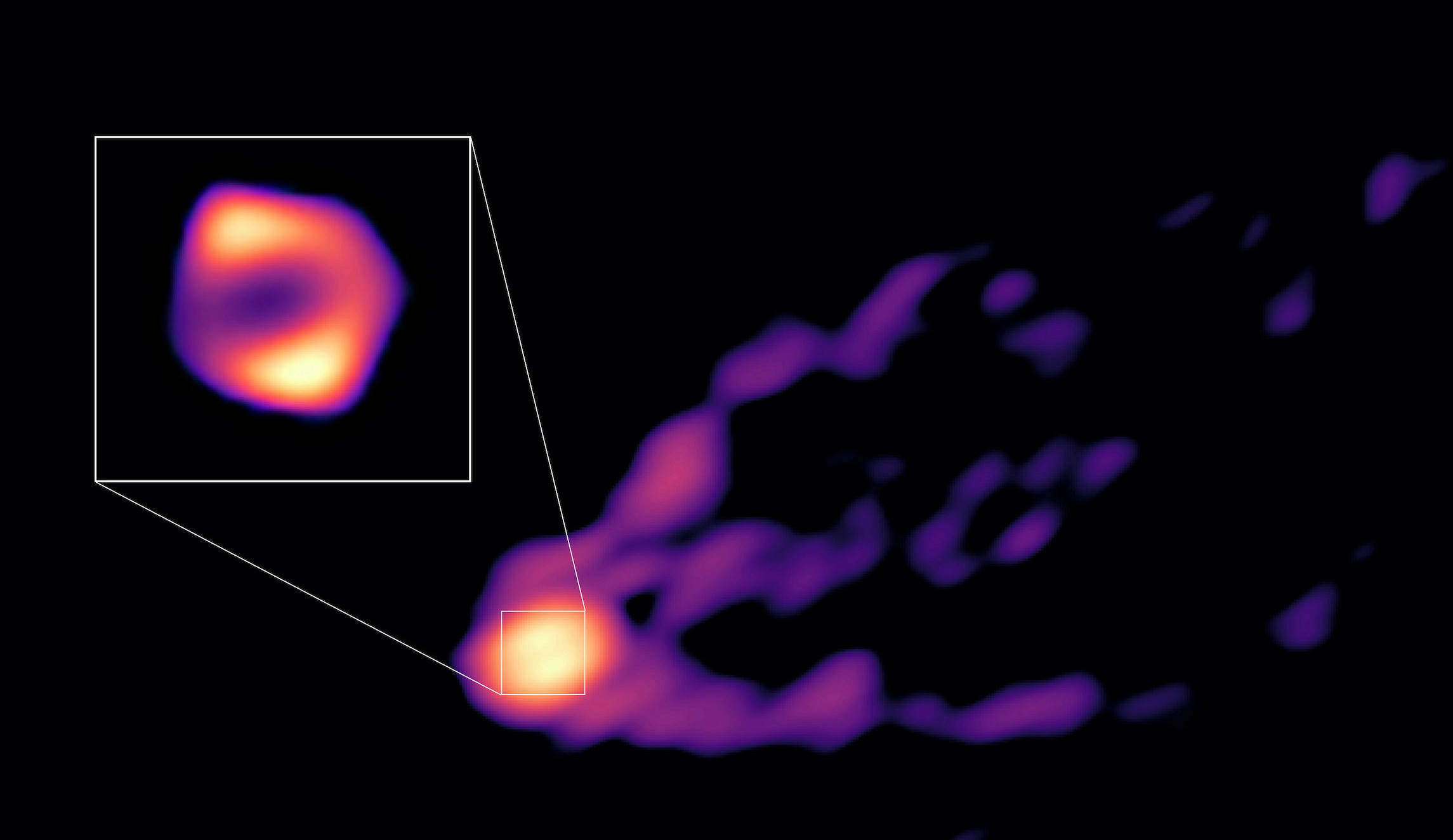Astronomers revealed the first image showing a jet being expelled from a black hole’s outer boundary.
The black hole, which is 6.5 billion times larger than the sun, is at the center of galaxy Messier 87, located 55 million light years away from Earth.
FIRST IMAGE OF A BLACK HOLE REWORKED WITH ARTIFICIAL INTELLIGENCE

“The bigger and thicker ring we now see shows that the material falling into the black hole contributes significantly to the observed emission in the new image, which allows us to better understand the physical processes near the black hole,” Ru-Sen Lu, the team leader of the Max Planck Research Group at the Shanghai Astronomical Observatory of the Chinese Academy, said in a statement.
Some of the brightest light produced in the universe comes from powerful jets, and these images could help experts investigate how black hole jets are formed.
In April 2019, scientists published the first image of a black hole in M87 using data from 2017 captured by the Event Horizon Telescope, a system of eight synchronized radio observatories that combine as one telescope and is designed to observe light in relation to black holes, according to the EHT webpage.
Now, a separate team of researchers made observations using telescopes from the Global Millimetre VLBI Array, the Atacama Large Millimeter/submillimeter Array, and the Greenland Telescope.
CLICK HERE TO READ MORE FROM THE WASHINGTON EXAMINER
The international team of scientists from the Shanghai Astronomical Observatory of the Chinese Academy of Sciences published the study in Nature on Wednesday.
“The spectacular image of the jet and ring in M87 is an important milestone, culminating in many years of collaborative efforts by our colleagues in Europe, including ESO, IRAM, Metsähovi, Yebes and Onsala, to align the GMVA array with phased ALMA for joint observations to reveal the finest details in the study of radio galaxies and quasars,” said research team member Eduardo Ros, a scientist at MPIfR and a European GMVA scheduler.

